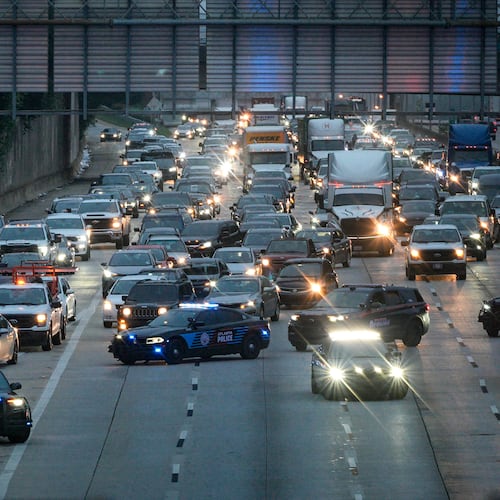Pedestrian safety has been top of mind lately. A recent column in this space addressed ways both people inside and outside of cars can make the interaction between both safer and more respectful. That drew backlash from pedestrians, who felt the piece equalized the blame and responsibility between the two parties.
While any overlap in a traffic environment requires respect in two directions, that doesn’t equate the vulnerabilities of both parties.
There is no doubt that pedestrians are much more at risk of injury or death than the drivers around them, and a new Insurance Institute for Highway Safety study shows why the gap is growing.
IIHS data compiled from numbers through 2020 showed that pedestrians are far more likely to be hit by SUVs, trucks, and vans than by smaller autos. Pedestrians also have a higher chance of death in those collisions because of the vehicles’ sizes and are more prone to be hit when that vehicle is turning.
Pedestrian deaths have risen 59% since 2009 to over 6,500 in 2020. This tragic increase is right in line with U.S. drivers opting for larger vehicles.
The odds increase when these vehicles turn through intersections. SUVs are twice as likely to kill a pedestrian when turning than are smaller cars. Vans and minivans are three times more likely and pickup trucks four times more. Right turns saw even more staggering numbers, with pickups 89% more likely than a car to kill a pedestrian.
The size of the vehicle is one factor; getting hit by a giant Ford Raptor leaves a bigger mark than a Mini Cooper does. The average American vehicle size is bigger now, so an automobile is more lethal to those around it.
But sight lines are another factor, the study says.
“It’s possible that the size, shape or location of the A-pillars that support the roof on either side of the windshield could make it harder for drivers of these larger vehicles to see crossing pedestrians when they are turning,” IIHS Senior Transportation Engineer Wen Hu said in a news release about the findings. IIHS also speculates that the height of these vehicles and the length of the front ends also make seeing people and gauging their distances more difficult.
A-pillars are the bars on either side of the windshield that connect a car’s roof to its body. These have to be thicker on bigger vehicles, to lessen the chance of collapse in a rollover crash.
This would help explain why turning is more lethal, as A-pillars would interfere in those sight lines. For example, a driver waiting to turn left at a green light would likely speed up to turn left through the gap in traffic. They would advance across a crosswalk that has a walk signal, and the driver’s right A-pillar would largely obstruct the view of someone beginning to cross.
Vans, SUVs, and pickups are 45%, 61%, and 80% more likely, respectively, than smaller cars to hit pedestrians walking or running next to the road. Again, the size of those autos and the greater lack of spatial awareness their drivers possess are factors.
These figures should be sobering to everyone, but especially to the many of us who drive larger cars. Driving is not a luxury, but a dire responsibility, and the bigger the vehicle, the more cautious motorists should be. Yet, these larger rides are classified the same as the license to drive a coupe or a sedan.
Bus and semi-truck drivers need separate license classifications because the consequences are greater when they make a mistake. Drivers in trucks, vans, and SUVs need to start behaving the same way.
Every driver should employ the same caution when driving in areas with pedestrians, but the onus is greater on people with bigger cars. Knowing the likelihood is greater to hurt someone in a crosswalk while turning, make sure to slow enough to check the crosswalk is clear.
In corridors with crosswalks not attached to traffic signals, drivers need to show even more restraint. We need to drive nearer to the speed limits and never assume that a crosswalk is clear — check it first. As soon as a pedestrian enters that crosswalk, drive like it is theirs. They have the right of way once they are within a lane of the side of the road where a car is.
Car size is not the only factor in rising pedestrian deaths in the last decade-plus. The spike in deaths is in direct correlation with smartphone proliferation. Distracted driving no doubt has its place in the pantheon of pedestrian dangers.
Despite the rising gas prices (and all of this harrowing data), people are probably not going to flock in droves to smaller cars. But with the benefit of all that cargo space comes a great responsibility.
Hardly anyone who hits and injures or kills a pedestrian sets out that day to do so. But most people who do could easily have avoided such tragedy by being better in touch with the fact that they pilot a potentially lethal device. And as these vehicles trend bigger and distractions become more prevalent, crossing or sharing streets becomes more dangerous for pedestrians and cyclists. Motorists need to become far more in tune with their fellow commuters’ vulnerability and turn back this awful trend.
Doug Turnbull, the PM drive Skycopter anchor for Triple Team Traffic on 95.5 WSB, is the Gridlock Guy. He also hosts a traffic podcast with Smilin’ Mark McKay on wsbradio.com. Contact him at Doug.Turnbull@cmg.com.
About the Author
The Latest
Featured

